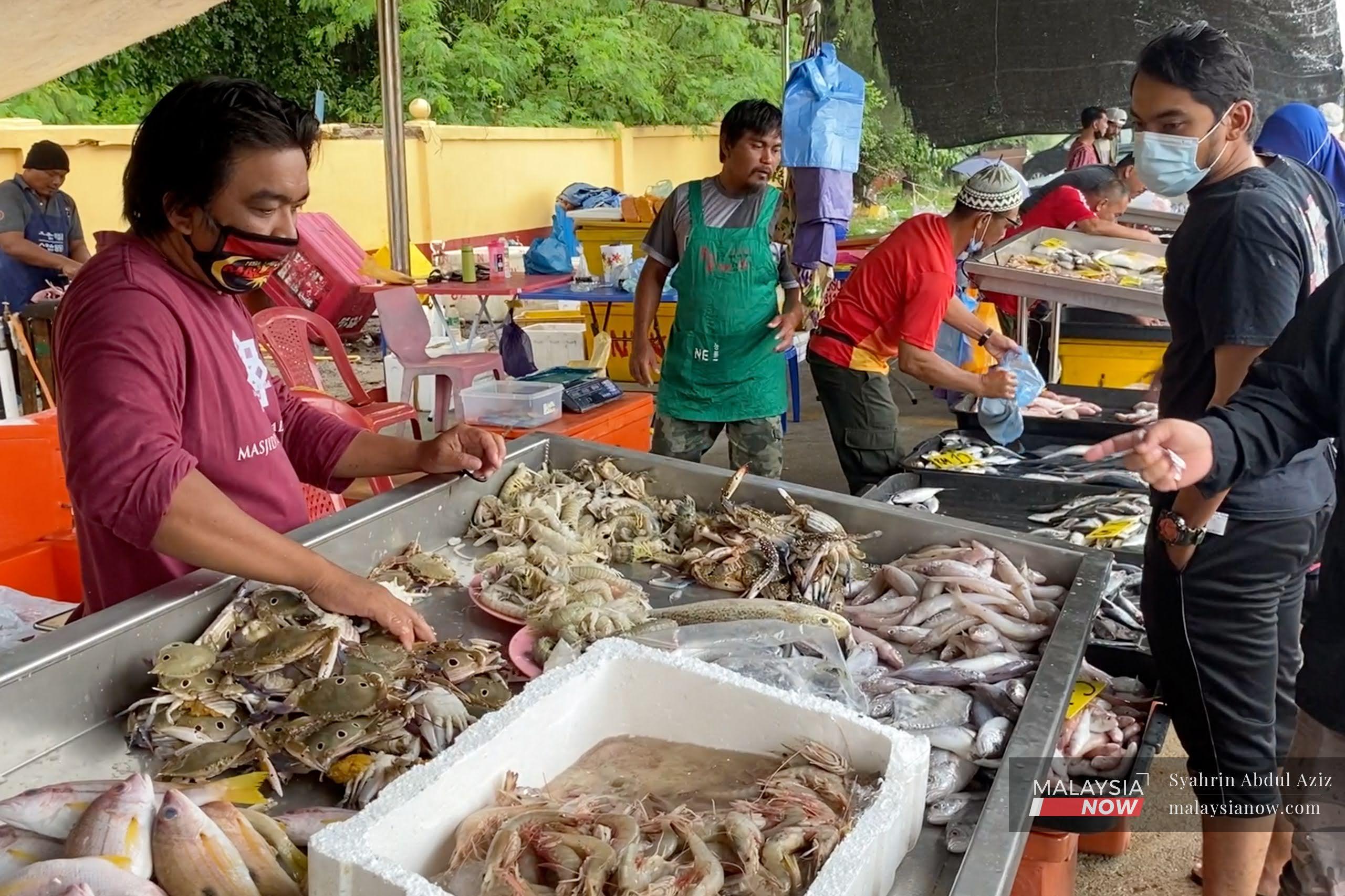The fight to bring back Malaysia’s dwindling fish population
Vessel licensing, the establishment of fishing zones and collaboration with marine enforcement agencies are just some of the initiatives taken by the government to preserve and revive the country's marine life.
Just In
Once something’s gone it’s not always possible to bring it back, but this is exactly what the fisheries department is attempting to do with the country’s marine life, long a victim of overfishing and unsustainable trawling.
MalaysiaNow previously reported that 96% of Malaysia’s demersal fish stock – fish that live and feed on or near the bottom of the ocean – had been lost in less than 60 years due to these issues.
Now, the department is going all out to bring this population back to life.
Operating under the agriculture and food industries ministry, the fisheries department or DoF has an arsenal of initiatives in place for its efforts to revive the once plentiful population.
First and foremost is the matter of controlling how many of these fish are caught.
To do this, the DoF has put in place what is known as a vessel licensing system.
The fisheries department has an arsenal of initiatives in place for its efforts to revive the once plentiful fish population.
Because Malaysia has reached the optimum number of fishing vessels operating in its waters, there have been no licences issued to new vessels since 1982, with the exception of ships used for deep sea fishing.
Vessels are also whitelisted, a process which ensures that they are fit to operate within the licensed period.
“This is one of the commitments of the department to curb illegal, unreported and unregulated fishing in the country,” a DoF spokesman told MalaysiaNow.
And the department has been busy: it has revoked the licences of 2,027 vessels so far.
Realising as well the value of a good defence, it has also committed itself to protecting the country’s remaining marine biodiversity. This means the establishment of marine parks and conservation zones and the creation of restricted fishing areas, among others.
In states like Kedah, Perak and Selangor, fishing areas have been rezoned, creating a space for the recovery of the fish population. Here, zero to one nautical miles from the shore have been dedicated to aquaculture, becoming the main breeding ground for juvenile fish to mature.
Fishing zones known as trawler operating zones meanwhile have been revised from five nautical miles to eight and above, to help the demersal fish stock recover, the spokesman added.
The department has also committed itself to protecting the country’s remaining marine biodiversity.
Given the magnitude of such initiatives, the DoF cannot go it alone.
“We work with agencies like the marine police, navy and Malaysian Maritime Enforcement Agency (APMM) to monitor and prevent misconduct that may affect fisheries resources,” the spokesman said.
In order to meet Malaysians’ demand for seafood without putting too much pressure on the country’s waning fish stock, the DoF sees the development of aquafarming as the way forward.
Key strategies will include promoting the development and use of existing and new technologies and innovation for aquaculture.
This includes the concept of “aquaculture smart farming” through use of the internet of things in aquaculture systems. This is expected to increase productivity, cut back on labour and facilitate operations in livestock farming or cages.
It is also crucial to ensure that such enterprises are licensed.
“This enables action to be taken against unlicensed aquaculture premises or those that violate the terms of the licence,” the spokesman said.
In the future, the installation of detectors such as the Automatic Identification System and Mobile Transceiver Unit will be made mandatory on all fishing vessels in selected zones.
This is to improve the efficiency of captured fisheries management and ensure sustainable fisheries resources in the country.
The Vessel Modernisation and Capture Mechanisation Programme, which received a budget allocation of RM150 million, will be implemented as well to increase control over fishing and the competitiveness of local fishermen.
Other efforts such as resource rehabilitation and stock enhancement programmes through habitat enhancement, the creation of protected breeding grounds, the installation of artificial reefs and release of baby fish into open waters and pilot programmes such as the no-catch period in Kedah and the establishment of fisheries refugia in Sarawak and Johor are among the other tricks the DoF has up its sleeve to overcome the marine life crisis.
Perhaps then, through the collective effort of all, Malaysians will be able to enjoy their seafood knowing that there is more where that came from.
Subscribe to our newsletter
To be updated with all the latest news and analyses daily.

